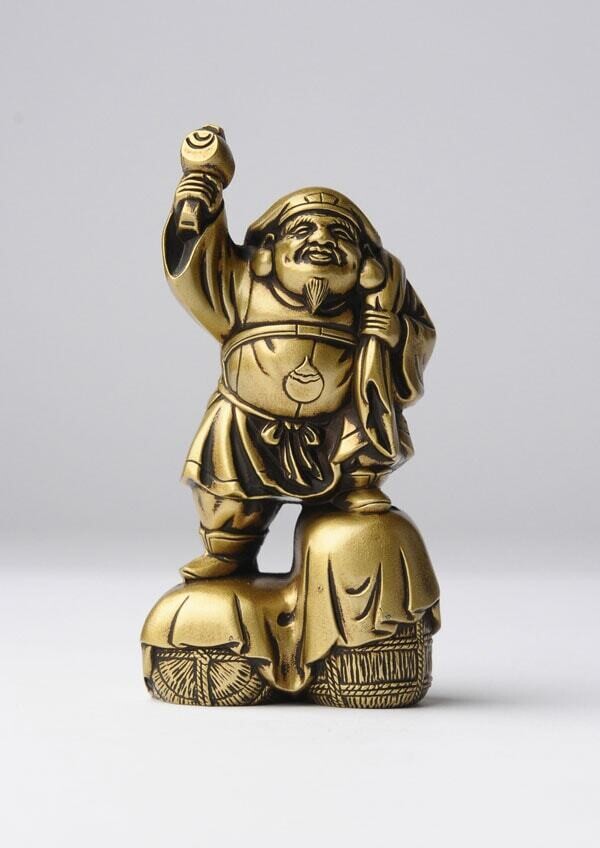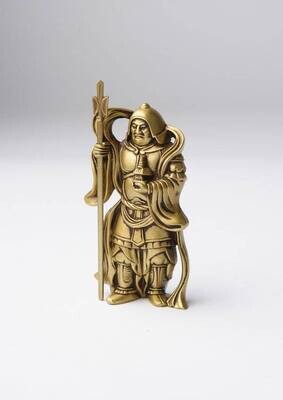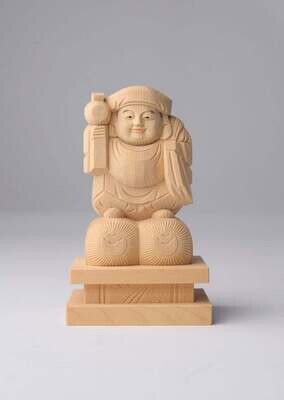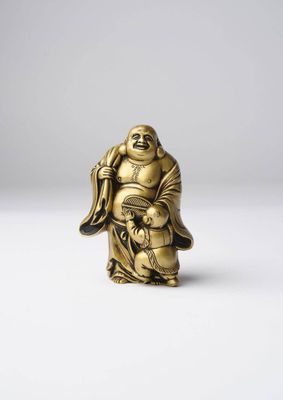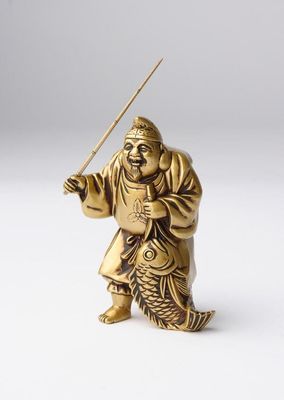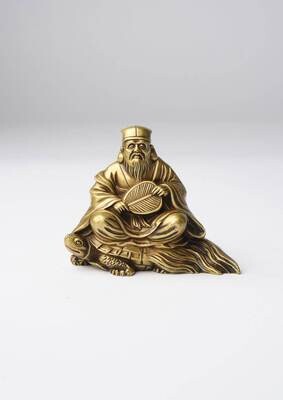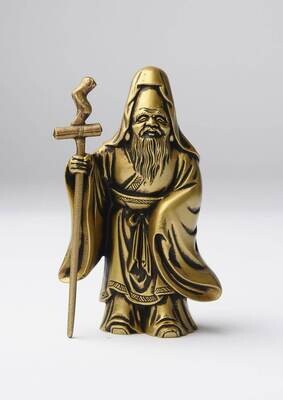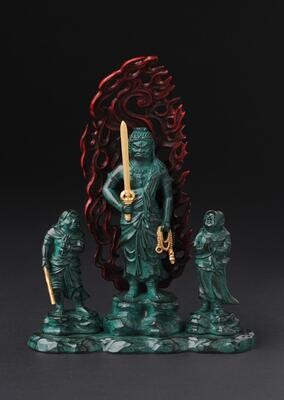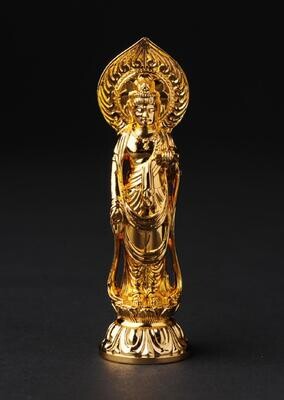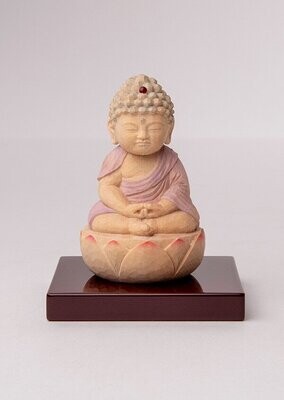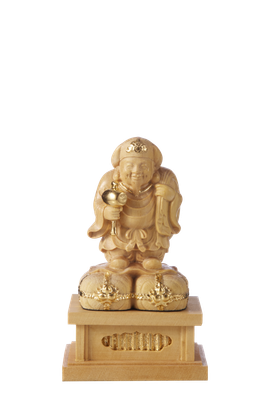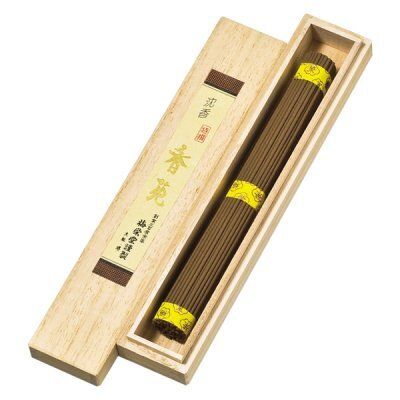Daikokuten (大黒天) | Makita Syuun (牧田秀雲)
Originally, this deity was transmitted from India as a guardian god of Buddhism. However, later it became associated with the Japanese mythological figure Ōkuninushi no Mikoto and was revered as a god of fortune. The deity is depicted holding a small hammer and a large bag, riding on a bale of rice. This statue has been finished in a refined and calming gold color, reminiscent of silk. Drawing parallels to the gods of India and China that once traveled along the Silk Road to Japan. The subtle yet deep luster makes it a suitable finish for interior design, blending seamlessly into various settings.
Shuun Makita (牧田秀雲) is a celebrated Buddhist sculptor in Japan. Born in Shizuoka Prefecture in 1917, at a very young age he studied under Yokohama sculptor Hideaki Mochizuki in 1932. After this, he carved shrine and temple sculptures as well as Buddhist statues all over the country, including in the bell tower and main hall of the Higashi-Kanagawa Kodo Buddhist Fellowship. His efforts culminated in his receiving of a letter of appreciation from the governor, when he exhibited at Nihombashi Mitsukoshi Main Store in Nihonbashi, Tokyo, for the preservation of excellent works of traditional techniques. He is also known for the reproduction of Japan's Important Cultural Property, Namikiri Fudoson, Koyasan Nan-In Temple, Wakayama Prefecture and the production of Ji-shu Buddhism founder Ippen Shonin standing statues at Sumiyoshi Temple and Kyojuji Temple, Tomobe, Ibaraki Prefecture.
- Size: 95(H)×42(W)×50(D)mm 516g
- Material: Zinc Alloy
- Made in Japan
- This product can take up to 10 days to ship
- You can choose the option to consecrate this statue (give an eye-opening ceremony) before it is shipped from Japan. If you choose this option, we will bring the statue to a Japanese temple, and pay them the necessary fees so that your statue is properly consecrated. The temple will issue a certificate of proof with your name on it, which will also be shipped together with your statue
- Shipped globally from Japan by using DHL. DHL is the world-class shipping services provider who makes international delivery a fast, smooth, and hassle-free experience. Delivery time can be faster than when shopping at an e-commerce website in your country, and of course your package will be covered by insurance. You can check the shipping cost for your entire order before you make a purchase
